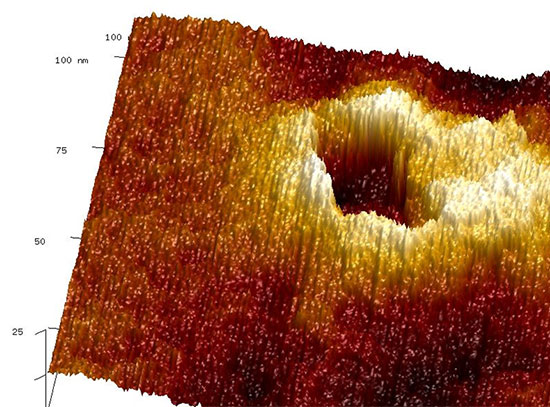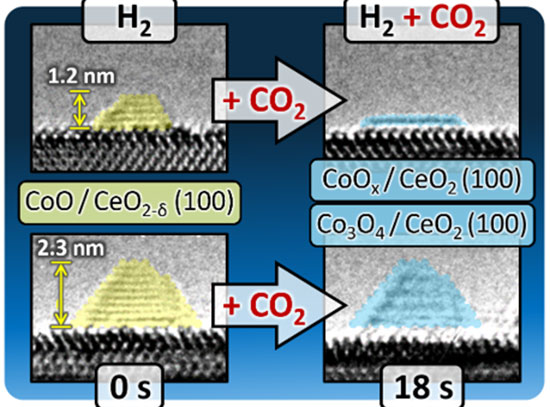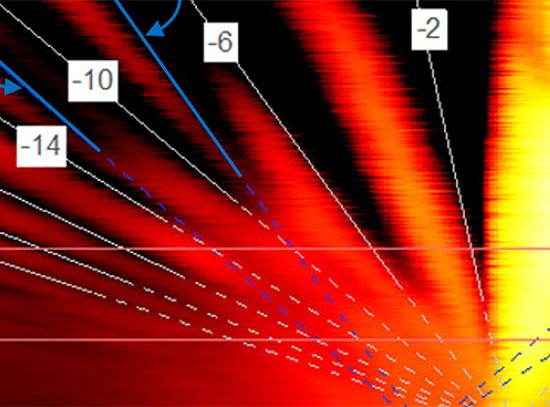Atomically Thin Mirrors: A New Frontier in Light Confinement
April 21, 2025
 enlarge
enlarge
Schematic representation of the TMD nanocavity. Two atomically thin MoSe2 mirrors embedded in hBN confine electromagnetic modes.
Scientific Achievement
Scientists from the University of Maryland, working with Center for Functional Nanomaterials staffs, developed a subwavelength 2D nanocavity using atomically thin transition metal dichalcogenide (TMD) mirrors with unique excitonic properties, enabling confined and tunable optical modes.
Significance and Impact
This work establishes a new platform for nanoscale light manipulation using atomically thin materials, with potential use in quantum information processing, optical computing, and quantum photonics.
Research Details
The researchers overcame significant fabrication challenges by carefully selecting and stacking pre-characterized molybdenum diselenide (MoSe2) monolayers to ensure high reflectivity and matching exciton energies. This work demonstrates a new mechanism for confining light using high-quality excitonic materials, opening up possibilities for spin-photon interfaces and chiral cavity electrodynamics. This breakthrough in nanophotonic technology could lead to advancements in various applications, including filtering, lasing, optical detection, and all-optical switching. The unique properties of this atomically thin cavity, such as its flat-band dispersion and chiral characteristics, may enable novel approaches to manipulating light-matter interactions at the nanoscale.
- CFN QPress was used to produce atomically thin molybdenum diselenide (MoSe2) for
- Angle-resolved measurements reveal a flat optical band, which leads to angle-independent optical modes.
- Demonstrated dynamic control of optical modes via electrical tuning, for on-demand photonic modulation.
Publication Reference
D. G. Suarez-Forero et al, Science Advances 10, 51 (2024).
DOI: https://www.science.org/doi/10.1126/sciadv.adr5904
Acknowledgment of Support
We thank A. Gonzalez-Tudela, E. Waks, X. Marie, and D. Wild for valuable discussions and enriching feedback on the manuscript.
Funding
This work was supported by the NSF DMR-2145712, AFOSR FA9550-19-1-0399 and FA9550-22-1-0339, ONR N00014-20-1-2325, NSF IMOD DMR-2019444, ARL W911NF1920181, and Minta Martin and Simons Foundation. The sample fabrication was supported by the US Department of Energy, Office of Science, Office of Basic Energy Sciences Early Career Research Program under award no. DE-SC-0022885. K.W. and T.T. acknowledge support from the JSPS KAKENHI (grant numbers 20H00354, 21H05233, and 23H02052) and World Premier International Research Center Initiative (WPI), MEXT, Japan. This research used Quantum Material Press (QPress) of the Center for Functional Nanomaterials (CFN), which is a US Department of Energy Office of Science User Facility, at Brookhaven National Laboratory under contract no. DE-SC0012704.
2025-22488 | INT/EXT | Newsroom









